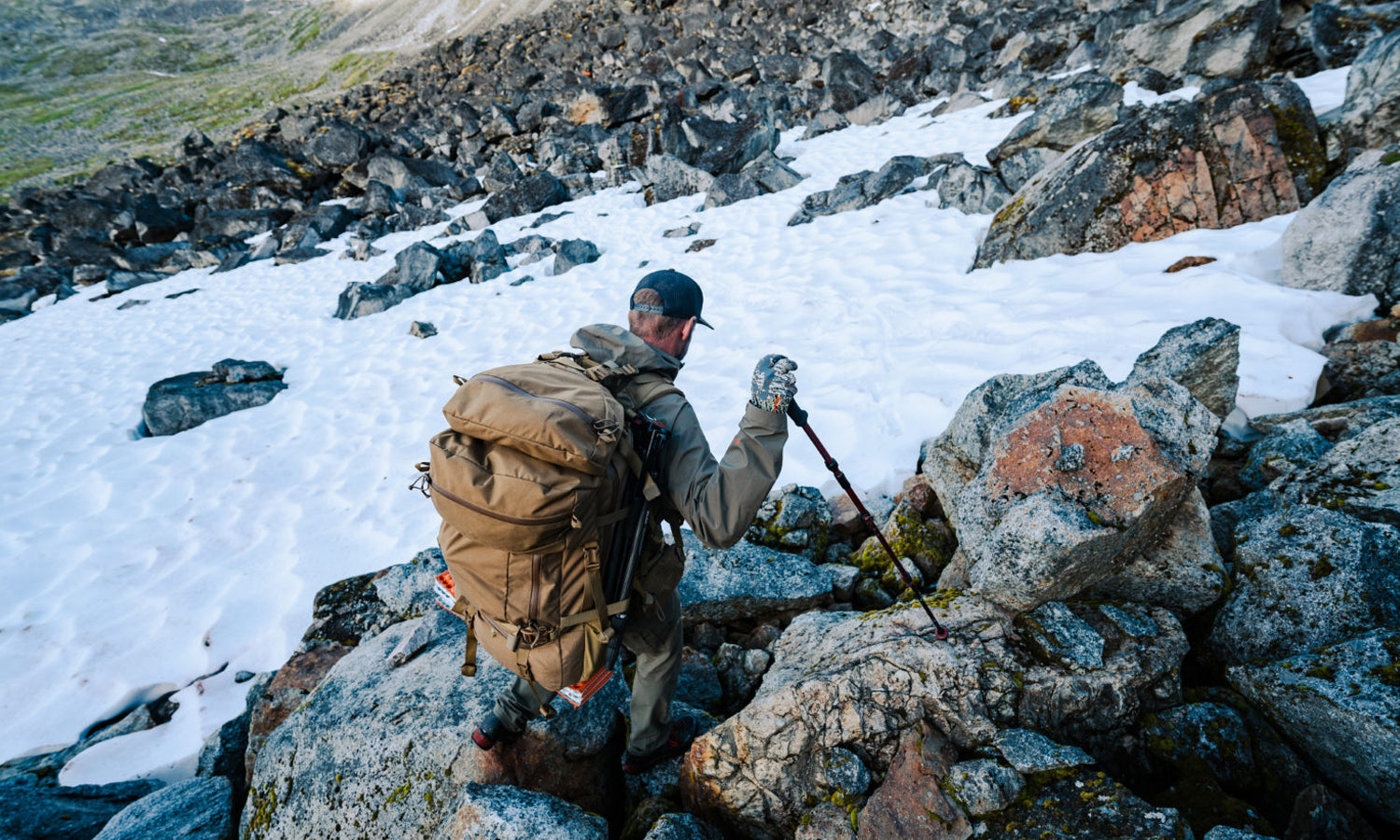7 Parameters for Choosing the Right Backpack for Your Next Mountain Hunt
By Adam Foss, MYSTERY RANCH Hunt Ambassador
Sheep hunters are gear obsessed. There are few gear choices in the sheep hunter’s kit that get researched, tested, and mulled over more than backpacks. And for good reason. A pack that performs is one of the most critical items in the gear quiver. However, choosing the right pack is highly personal and varies greatly among hunting styles, body types, and personal preferences.
Gear has advanced and backpacks have followed the wave of technical materials, advanced design, and quality construction seen in the hunting and outdoor industry over the last 20-25 years. We’ve come a long way from Trapper Nelson pack boards and blue jeans, though if you’re still running these, you’re a legend in my books.
Because of the multitude of backpack options out there, I’ve provided the factors that go into my pack selection process with the aim of providing a framework for your next backpack hunt. Keep in mind, what works well for me may not work for you. However, the factors and principles will allow you to find the right option for your mountain hunting pursuits. Enough with the preamble, let’s get into it.
7 Essential Factors to Consider When Choosing a Mountain Hunting Pack
1 | Comfort
The comfort of a backpack cannot be overstated. I’m looking for a backpack that uses quality foams specifically in the waist belt and shoulder straps that resist breaking down and compressing over time. A backpack should feel comfortable when shouldered under a moderate weight, say 40lbs, and not produce friction, extreme restriction, or looseness anywhere the harnessing contacts the body. Signs that a pack doesn’t deliver enough comfort are numb or tingling hands and shoulders, hot spots on the lower back, bruising on the hips, and pain in the upper trapezius and shoulders. However, this also may be due to improper fit so take that into consideration — see next point for more on this. Of course, some of these symptoms are unavoidable under extremely heavy loads, but they should be the exception, not the norm.

2 | Fit
The ability for a pack to be custom fit to the individual is critical. I think about this in two ways — macro fit and micro fit. Macro fit is a pack that allows the user to select the proper waist belt and yoke sizes. Micro fit is the built-in adjustability to subtly dial in these parameters for a perfect fit, every time regardless of layers or increased load. Any quality backpack brand will have videos of proper fit adjustments online and hunters must take it upon themselves to learn these practices before they hit the field. Testing this out on training hikes will help dial in fit and also give confidence in knowing the ins and outs of the backpack.

3 | Functionality and Features
Here’s where personal preference starts to factor into the backpack conversation. For example, I prefer the ability to strap my bow to the back panel of the pack, while still leaving quick access to the body of the bag for retrieving things like a spotting scope and rain gear throughout the day.Additionally, the ability for the bag to be separated away from the frame is a paramount feature for backpack hunting. It allows meat to be carried close to the frame and gives an additional volume bump when needed. I also prefer using a backpack system built from a common frame, where bags can be swapped in for different hunt duration or style. That way, I know I’m getting the same fit and performance out my frame, just with a few different features and volume based on the particular bag.

4 | Durability
Mountain hunting can be rough on gear. Sharp shale, constant bushwhacking, stuffing and ripping out gear, and exposure to sun, dirt, and blood can take its toll. I’m looking for a backpack with quality fabrics, burley buckles, and frame materials that are solid, not stripped down to the point that durability is sacrificed. Keep in mind, I tend to think about outdoor gear, in general, this way. Even though almost all companies warranty their gear due to a manufacturing malfunction, it does little when something fails on a packout, or in the middle of a long season where waiting for a repair isn’t an option.

5 | Weight
The overall weight of the pack is an important specification when I’m looking at a backpack, but it’s not the most important. Why? Because a pack that saved me a pound or two but fails or is noticeably less comfortable for me is not worth the trade-off. I can shave weight out of other areas of my sheep hunting kit, but I’d rather prioritize quality, durability, and performance when it comes to my backpack.

6 | Volume
When deciding on volume, something in the 80-100L range will suffice for 7-10 day backpack hunts. For day or light and fast overnight trips, I can squeeze into a 45-50L pack, knowing I can separate the bag away from the frame for additional volume if a tag is filled.

7 | Additional Factors
From there, I’ll consider a few additional factors, such as solo hunting versus with a partner. Solo hunting doesn’t allow you to leverage shared gear items, such as a stove, spotting scope, tripod, tent, and other emergency gear, so more volume may be required.Similarly, late-season hunts require bulkier clothing layers, more stove fuel, and special gear like micro-spikes, snowshoes, or crampons compared to early-season sheep hunting. Adjust volume, features and functionality accordingly.





